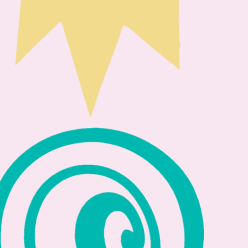Stroke, menopause and HRT: what you need to know
Every five minutes in the UK someone has a stroke. Here we look at everything you need to know about the condition, how the menopause affects your risk – and whether you can take HRT.
What is a stroke?
A stroke is a life-threatening medical emergency that happens when the blood supply to part of your brain is cut off or restricted. This can lead to brain injury, disability and death. In most cases this is caused by a blood clot in a vessel stopping your blood supply, called an ischaemic stroke. In a haemorrhagic stroke, a weakened blood vessel supplying your brain ruptures [1].
What symptoms can a stroke cause?
Symptoms of a stroke depend on which part of your brain is affected. These can include your face dropping on one side, you may not be able to lift one or both arms or they may feel weak. Speech may become slurred or garbled, there can be confusion, dizziness and changes to your vision. If you suspect you or someone else is experiencing a stroke, dial 999.
Are women at higher risk of stroke?
About 100,000 people have strokes every year in the UK [2]. While men do have slightly more strokes, it is one of the four leading causes of death in women in the UK, according to the Stroke Association [3].
Women tend to have strokes at a later age than men, and nearly half of all strokes (45%) in women happen past the age of 80.
Your risk also increases during pregnancy and immediately after giving birth, when your blood is more likely to clot.
More women than men are affected by a very rare and serious form of stroke called cavernous sinus thrombosis: this is when a blood clot forms in a large vein carrying blood away from the brain through a hollow space behind the eye [4].
What can increase the risk of having a stroke?
Age increases your risk, as your blood vessels become harder and narrower, and more likely to become blocked. Certain health conditions will also increase your odds, like high blood pressure, high cholesterol, diabetes and atrial fibrillation (irregular heartbeat).
Smoking and a lack of exercise can also increase your risk.
There are a number of medical conditions that slightly increase stroke risk that affect women more than men. One is migraine with aura, which is when, along with the head pain, you also experience symptoms that can include changes to your vision, numbness or tingling in parts of your body, dizziness and speech difficulties. While migraine, which affects a lot more women than men, is not thought to cause stroke, this form does seem to slightly increase the risk of having one, although it is not known why, according to the Migraine Trust [5].
Another condition that increases risk is systemic lupus erythematosus, which mainly affects women below the age of 50, and is more common in people of African, Caribbean or South Asian origin [3].
Does menopause increase risk of stroke?
Your risk of stroke increases post-menopause and there are a number of factors involved.
Partly it is down to a reduction of oestrogen. This hormone helps protect your blood vessels, by keeping them relaxed and open, which reduces the risk of stroke-causing blockages.
Research has found that if you go through menopause under 40, your risk of stroke increases, when compared to those who experience it between 50 and 54 [6].
For each year after 50 that passed before a woman entered menopause, the risk of a stroke dropped by 2%, probably due to the extra time with oestrogen in your body.
Also some of the risk factors that increase stroke can go up around the time of your menopause. More women develop type 2 diabetes during and after menopause as changes in your hormones can lead to more weight around the middle of your body and your blood pressure increasing, according to Diabetes UK [7].
Studies have shown that women who experience frequent vasomotor symptoms (hot flushes and night sweats) are more likely to develop heart disease and stroke compared to those who do not, although it is not fully understood why this happens [8].
Can I take HRT if I have a history of stroke?
In most cases, yes. But this is where a detailed conversation with a healthcare professional is needed to look at your individual risk and the best options for you.
The NICE menopause guidance states there is a small increase in the risk of stroke from taking oestrogen tablets, but not when it is taken through the skin in patches or gel [9].
This is because oestrogen used in this way goes straight into your bloodstream, so bypasses the liver, which produces your clotting factors. When oestrogen is taken orally, it is metabolised in the liver, so stimulates the clotting factors.
NICE guidance also stresses that the risk of stroke in women under 60 is very low, regardless of whether you take HRT or not [9].
There is some evidence that HRT may reduce some of the risk factors that increase your risk of stroke, including type 2 diabetes, high blood pressure and high cholesterol.
The Stroke Association states patches, gels and vaginal oestrogen could all be suitable options, depending on your other personal risk factors.
So if you’re experiencing menopausal symptoms, book an appointment with a healthcare professional to find out which could be the best options for you.
Keeping a diary of your cycle and symptoms before you go can help your healthcare professional work out the best HRT approach for you.
What about the pill?
Using the combined oral contraceptive pill (combined pill) is linked to a small increase in risk of stroke and blood clots for some people [3]. The majority of combined pills contain older synthetic types of oestrogen, and when oestrogen is taken orally, it is metabolised in the liver, so stimulates the clotting factors.
A combined contraceptive patch is also available. While this does also contain synthetic hormones, oestrogen used in this way goes straight into your bloodstream, so bypasses the liver, which produces your clotting factors.
As with HRT, discuss your options with your healthcare professional who will prescribe contraception which takes into account your risk factors.
What should I do to reduce my risk of stroke?
Taking steps that can developing risk factors, like high blood pressure, type 2 diabetes and high cholesterol, can help you avoid a stroke.
Being active, stopping smoking, drinking within safe limits, eating a balanced diet and staying at a healthy weight can help with these conditions.
Take any medication your prescribed to manage these health conditions, and take up any checks that can help pick them up.
If you’re aged between 40 and 74, you are entitled to an NHS Health Check every five years which can help pick up these conditions.
If you’re from South Asian, Chinese, African-Caribbean, black African and other high-risk groups, you can have a diabetes assessment from 25 [10].
References
1. NHS.uk (2022) ‘Stroke’
2. Stroke Association ‘Stroke statistics’
3. Stroke Association ‘Women and stroke’
4. NHS.uk (2021) ‘Cavernous sinus thrombosis’
5. The Migraine Trust ‘Migraine and stroke’
6. Tschiderer L et al (2023), ‘Age at menopause and the risk of stroke: observational and Mendelian randomization analysis in 204 244 Postmenopausal Women’, Journal of the American Heart Association, 12(18), e030280. doi: 10.1161/JAHA.123.030280.
7. Diabetes UK ‘Menopause and Diabetes’
8. Thurston, R. C. et al. (2021), ‘Menopausal vasomotor symptoms and risk of incident cardiovascular disease events in SWAN’, Journal of the American Heart Association, 10 (3), e017416. doi:10.1161/JAHA.120.017416
9. NICE (2015) ‘Menopause: Diagnosis and Management’
10. NICE (2012) ‘Type 2 diabetes: prevention in people at high risk’

![Symptoms of the menopause [Skill Boosters Video]](https://balance-menopause.com/uploads/2021/09/Group-1-v3-800x800.jpg)



